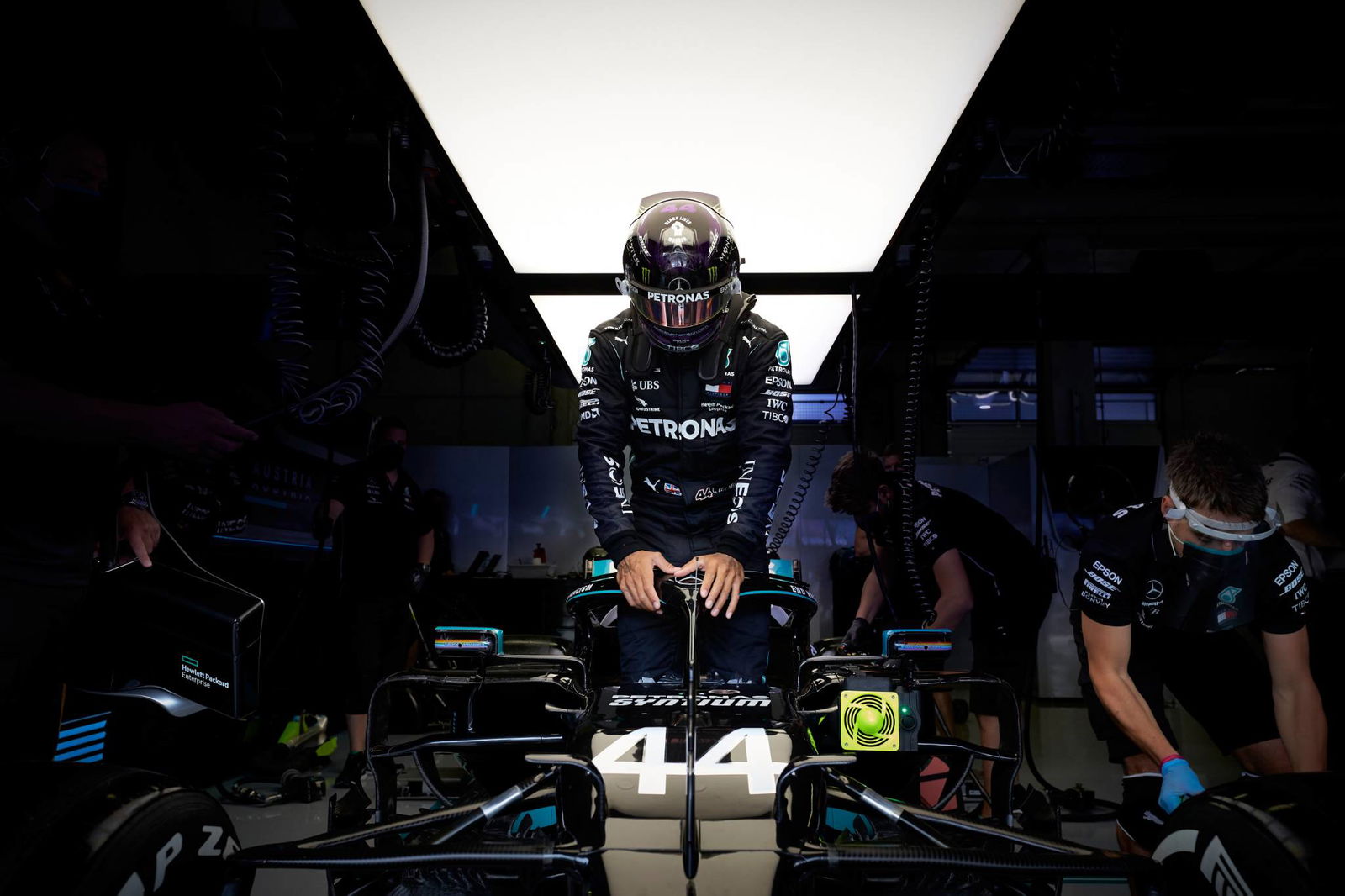How F1 social media post led to Lewis Hamilton’s Austrian GP grid drop
The emergence of new video footage posted by the official Formula 1 Twitter account led to a U-turn by the stewards and ultimately resulted in Lewis Hamilton’s Austrian Grand Prix grid drop.
More than three hours after qualifying ended on Saturday, Hamilton had been cleared of failing to slow down sufficiently under yellow caution flags caused, rather ironically, by his Mercedes teammate Valtteri Bottas who took a trip across the grass in Q3 en route to claiming pole position for the opening round of the delayed 2020 season.
Case closed, right?

The emergence of new video footage posted by the official Formula 1 Twitter account led to a U-turn by the stewards and ultimately resulted in Lewis Hamilton’s Austrian Grand Prix grid drop.
More than three hours after qualifying ended on Saturday, Hamilton had been cleared of failing to slow down sufficiently under yellow caution flags caused, rather ironically, by his Mercedes teammate Valtteri Bottas who took a trip across the grass in Q3 en route to claiming pole position for the opening round of the delayed 2020 season.
Case closed, right?
Wrong. In an unusual turn of events, less than two hours before lights out in Spielberg, Red Bull requested the stewards take another look at the incident.
Following a second investigation, it soon became evident that Hamilton was in line for a grid penalty when his race crew began preparing his car in the fifth slot on the grid, while Red Bull pair Max Verstappen and Alex Albon had moved up to second and fourth respectively, with McLaren’s Lando Norris sandwiched in-between in P3.
Confirmation followed 40 minutes before the race start that the six-times world champion had been slapped with a three-place grid penalty, dropping him to fifth.
Austrian GP stewards accepted new evidence from the onboard 360 camera on the no.44 Mercedes which they said “clearly shows that a yellow light panel was flashing on the left side of the track in Turn 5.”
It was this footage, posted on the official Formula 1 social media accounts late on Saturday evening, that swayed Red Bull to lodge a review into the incident.
The stewards cleared @LewisHamilton of any wrongdoing following this yellow flags incident at the end of qualifying on Saturday #AustrianGP #F1 pic.twitter.com/Vx9ziJtuU3
— Formula 1 (@F1) July 4, 2020
“It was pointed out to us on social media that there was a different camera angle, with a 360-degree camera, that showed very clearly there was a yellow light box that he had driven through,” Red Bull team boss Christian Horner explained.
“It only seemed consistent with Mexico, so we asked the FIA to have another look at it and they said they hadn’t seen that footage previously, so for whatever reason they hadn’t had the access or looked at the camera.
“Having looked at that, and reviewed it, it then became a very clear decision for them.”
But why did the stewards not have such crucial footage during the initial hearing on Saturday? According to F1 race director Michael Masi, logistics relating to the technology had prevented it from being available in time.
"It’s actually something that we’ve been speaking with FOM [about],” Masi said.
“Obviously, it’s not something it’s available live due to bandwidth. It needs to be downloaded off the car, processed, et cetera.”
Masi also explained how the request to re-open the case had come about, under F1’s right of review rules.
“There’s been some misquotation that it was a ‘protest’ from Red Bull. It wasn’t actually a protest,” he said. “It was a question that they raised of: ‘Is this a new and significant element?’
“Which is why there was actually two separate decisions. That’s why the first decision is: Is it a new and significant element? The stewards determined that, yes, it was.
“Then, obviously, they went into a hearing as a result of that and determined that, effectively, if they’d had that footage [on Saturday], they would have deemed and came to the same decision they did prior to the race.”



